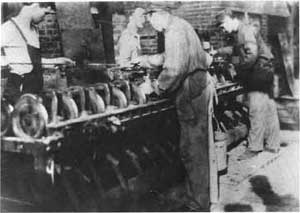History of Marbles
Marbles have been made of round stones, clay balls, marble, porcelain, glass and steel. Toy makers have found increasingly ingeneous methods for making marbles that are beautiful, durable, inexpensive, and fun. We are going to look at how the marbles have been made. Of course, we make marbles for play, so we'll look at how people have played with marbles.
American Toy Marble Museum
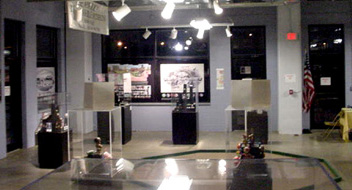
The American Toy Marble Museum is located in Akron Ohio, where some of the earliest american marbles were produced. The American Marble and Toy Manufacturing Company was founded by Samuel C. Dyke in 1891 in Akron. The museum displays a wide range of marbles and other toys and tools from the industry.
Ancient Marbles
The Most Simple ToyArchaeologists speculate that the small clay balls found in the pyramid tombs of Egyptian kinds were produced for marble games. It is thought that the 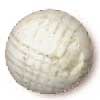 Aztecs played a form of marbles. Clay marbles have been found in prehistoric pueblo ruins in the southwestern United States, in the classic periods Valley of Mexico ruins, and in the northern plains.
Aztecs played a form of marbles. Clay marbles have been found in prehistoric pueblo ruins in the southwestern United States, in the classic periods Valley of Mexico ruins, and in the northern plains.
The British Museum in London displays marbles of clay, stone and flint that date back to ancient Roman and Egyption civilizations.
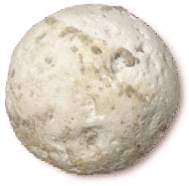
In Ancient Greece and Rome, children played games with round nuts, and Jewish children played games with filberts at Passorver. The Latin expression "relinguere nuces" - putting away childish things - probably refers to the polished nuts in these games. Although most early marble games were played with stone and nuts, some early Roman glass spheres have been found in Europe. Whether they were intended for jewelery or served as childrens' toys is not known.
A second century roman, Athenaeus writes of a game of marbles in which the suitors of Penelope in the Odysseey shot their alleys against another marble representing the queen. The first player to hit the queen marble had another turn, and if he was successful again he was considered to be the probable bridegroom.
Glass marbles are thought to have been some of the many glass objects made in ninth century Venice, but it is not until the late middle ages that the playing of marbles games is again documented. It appears that by then marbles were known throughout Europe. A manustript from the fifteenth centruy refers to 'little balls with which schoolboys played". In 1503 the town council of Nurenberg, Germany, limited the playing of marble games to a meadow outside of town.
The popularity of marbles in England during the Middle Ages is evidenced in the town council statues of the village of Saint Gall, which othorized the user of a cat-o-nin-tails on boys who played marbles  under the fish stand and refused to be warned off". A painting by Pieter Brueghel the Elder, "Children's Games" dated 1560 shows a scene of children playing marbles.
under the fish stand and refused to be warned off". A painting by Pieter Brueghel the Elder, "Children's Games" dated 1560 shows a scene of children playing marbles.
Archeologists have discovered marbles in the ruins of homes from this period, including the home of protestant Martin Luther.
In 1720 Daniel Defoe, the author of Robinson Crusoe wrote of a marble player "so dexterous an artist at shooting the tittle alabaster globe.. that he seldom missed."
Transition MarblesToward the end of the nineteenth century American entrepreneurs began to vie for a share of the German-dominated marble industry. Early attempts to compete with Germain production of handmade marbles provided commercially unsuccessful.
James Leighton, who founded and worked for a variety of turn of the century marbles companies, developed a new tool, a mold on a pair of tongs. This tool made it possible to create glass marbles that had only one pontil, the rough mark left on the glass when it was removed from a long steel rod called the punty. These marbles, today known as transitions, were a first step on the path top producing machine made marbles. They were made between 1896 and 1901.
The first truly machine made marbles were manufactured by an inventive Danish immigrant, Martin Frederick Christensen around the turn of the century. By the 1920s, machine -made marbles had supplanted the imports from Germany. World War 1 closed down many German marble mills, and they were never reopened. Imported German handmade marbles were to become a thing of the past as twentieth century progressed, bringing with it automation and mass production.
Marbles Industry
Early American Marbles ManufacturersMarbles as we know them today began in the mid 1800's when they were produced in quantities in Germany. The name marble originates with the type of stone that was once used to make marbles. White marble, alabaster marbles were the best playing pieces during the early 1800s. German hand production continued until the earliest forms of machine production began in the early 1900's.
M.F. Christensen and Son – In 1900 Martin Frederick Christensen patented a machine that revolutionized the manufacture of steel ball bearings. Using the same principles, he went on to design a machine that would make balls from glass. It took a team of two people to operate. When marbles were to consist of two or more colors, it was necessary to melt the glass in separate pots of color and then pour them into a third pot to be stirred. A worker would then gather some of the molten glass on a puny, allowing the glass to drip downward over each set of wheels. The other worker would use a tool to shear off the exact amount of glass to make the size marble being produced. Ten thousand marbles could be produced in a ten hour day. With this machine and the glass formulas he acquired from Leighton, Christensen established in Ohio the first company to manufacture machine made glass marbles.
Akro Agate Company – established in Akron Ohio in 1911, the Akro Agate Company originally packaged and sold marbles it purchased in bulk from M.F. Christensen and Son. By 1915, the company was making its own marbles at its marble works in West Virginia. Their significant contribution was the introduction of an automatic cutoff of hot glass, which further automated the machinery by eliminating hand gathering of glass.
The Golden Age of Marbles
The decade that spanned the late 1920s and 1930s 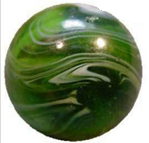 is referred to by collectors as the Golden Age of Marbles. On gets a sense of how popular marbles were when one notes that West Virginia companies such as Master Marble, Vitro Agate, Alox Manufacturing and Champion Agate went into business and made a profit during a time in America when thousands of other businesses failed.
is referred to by collectors as the Golden Age of Marbles. On gets a sense of how popular marbles were when one notes that West Virginia companies such as Master Marble, Vitro Agate, Alox Manufacturing and Champion Agate went into business and made a profit during a time in America when thousands of other businesses failed.
Peltier Glass Company –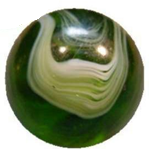 Sellers and Joseph Peltier learned glassmaking from their French immigrant father, Victor, who specialized in stained glass. When a fire destroyed their Novelty Glass Company factory, the two brothers rebuilt the glassworks and renamed it the Pelterier Glass Company. In the early 1920's,
Sellers and Joseph Peltier learned glassmaking from their French immigrant father, Victor, who specialized in stained glass. When a fire destroyed their Novelty Glass Company factory, the two brothers rebuilt the glassworks and renamed it the Pelterier Glass Company. In the early 1920's, 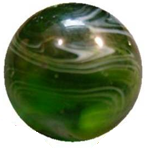 Peltier Glass began to make a line of marbles producing brightly colored slags, swirls, corkscrews, and agates. It became one of the leading marble manufacturers from the 1920s to the 1940s. In addition to its regular line of marbles, Pelteir produced picture marbles, a popular series of twelve marbles that each had a decal of a contemporary comic-strip characters
Peltier Glass began to make a line of marbles producing brightly colored slags, swirls, corkscrews, and agates. It became one of the leading marble manufacturers from the 1920s to the 1940s. In addition to its regular line of marbles, Pelteir produced picture marbles, a popular series of twelve marbles that each had a decal of a contemporary comic-strip characters 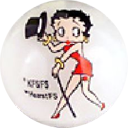 such as Betty Boop and Any Gump. Today these marbles are known to collectors as comics. The Peltier Glass Company is still manufacturing marbles in Ottawa Illinois.
such as Betty Boop and Any Gump. Today these marbles are known to collectors as comics. The Peltier Glass Company is still manufacturing marbles in Ottawa Illinois.
Christensen Agate Company – Christensen glass was founded in 1925 and produced some of the most beautiful early machine made marbles. Victims of the early years of the Great Depression, Christensen Agate went out of business in 1933. Because of its short existence and the company's limited capacity, Christiensen marbles are relative scarce. Today this company's guineas, cobras, flames, slags, and opaque swirls are among the most valuable and sought after machine made marbles.
Ravenswood Novelty Company – Founded in 1929 in Ravens wood West Virginia by Charles Turnbull, the Ravenswood Novelty Company produced ceramics as well as marbles. According to company records, Ravenswood produced around one hundred million marbles per year. When Ravenswood was unable to compete with the Japanese Cat's eyes that flooded the market in the early 1950's, the company went out of business.
Modern Marbles
Today you can find hand made glass marbles made by artists from around the world, and machine made marbles produced in vast quantities.
The centuries old composition of glass used for handmade marbles, sand, soda ash and lime is the same basic glass used for machine made marbles. Other ingredients added include zinc oxide, aluminum hydrate, and various coloring agents. In the manufacturing process, the glass is melted in a large furnace to a temperature of 2,300 degrees Fahrenheit for up to twenty-eight hours, until it reaches the consistency of molasses. At this point, the molten batter pours through an opening in the furnace, where shears cut the glass into equal pieces. These pieces move through rollers and cool rapidly, hardening into marbles as they are transported. They then drop into metal containers for annealing. Once cooled, the marbles are inspected, sorted, and packaged for sale.
Billions of machine-made marbles have been produced during this century. Machine-made marbles reached the peak of their popularity in the late 1920s and 1930s when competition between manufacturers made marbles plentiful and cheap. American manufacturers dominated the marble market until the introduction of Japanese cat's-eye marbles in the 1950s. Their enormous popularity over the next decade cause many American By the 1960's interest in marbles had waned.
Fine Art Marbles
There are a number of glass artists making marbles in small quantities today.
Contemporary Marble Makers
Marbles still appeal to people of all ages. Kids and adults love to play, collect and trade them. So long as marbles have this natural appeal, there will be marble makers. Marbles are still poduced in vast quanties by several marble manufacturers. There are also a large number of artist, hobbyists, and glass shops who produce fine art marbles.

